Vietnamese Dishes: Basic Overview
Common Ingredients
Common Cooking Methods
Courses
Meals
Key Taste
Eating Etiquette
Meal Presentation
Culinary Festivals
Influence and Fusion
Popular Types of Vietnamese Dishes
-
Dumplings
Vietnamese dumplings are typically made from a dough of rice/sticky rice flour, which are naturally gluten-free.
Some are filled with a mixture of ingredients, such as shrimp, pork, and vegetables, not ideal for vegan/vegetarian meals.
Common dumpling cooking methods are steaming, frying, or boiling.
They also come in various shapes, like pyramids, round/spherical, or cylindrical.
Some are wrapped in banana leaves.
-
Cakes and Pastries
Cakes and pastries in Vietnam are diverse in styles, appearances, tastes, and textures.
They are normally hand-held treats, from savory to sweet tastes. Some are sold as street food.
Common ingredients for cakes and pastries are rice flour, mung beans, and fruits, which reflect Vietnam’s rich agricultural and tropical environment.
Many of them are ideal for vegan and vegetarian diets. Some are often gluten-free, as Vietnamese use rice flour more than wheat flour.
-
Pancakes
They are typically savory delights made with various ingredients with different textures, such as soft, chewy, crunchy, or crispy.
Each region in Vietnam has different pancake specialties. They can be steamed, fried, or cooked in special molds over a fire.
Many pancakes contain meat or seafood, which is not ideal for vegan and vegetarian dishes.
-
Sandwiches
Vietnamese-style sandwich is a fusion dish made with French baguettes and other ingredients like meats, pâté, pickles, and herbs.
-
Rolls
Rolls feature thin sheets made from rice or batter, which are often used to wrap fillings and create rolls.
They can be served fresh or fried with pairing sauce (can be a fish sauce-based dip, hoisin, or peanut sauce).
Most Vietnamese rolls are not vegan-friendly as they include meat or are dipped in fish sauce.
-
Rice Paper Dishes
They include rice paper as a main ingredient.
It’s a thin, edible paper-like material made from rice.
They are popular street food in Vietnam, especially in the Southern part.
Rice paper itself is vegan and vegetarian.
-
Rice Dishes
Rice is a staple in Vietnamese daily meals, resulting in diverse dishes centered around this ingredient.
Rice dishes are prepared in various styles, ranging from simple dishes to complex ones.
Some are often served with different accompaniments like meat, vegetables, or sauce.
Most rice dishes in Vietnam are gluten-free, except those cooked or served with soy sauce.
-
Glutinous Rice Dishes
Glutinous rice is another staple ingredient in the country, which is gluten-free, vegetarian, and vegan.
They are used to make both sweet and savory dishes. Some are wrapped in leaves.
It is also an important component to make traditional delights for special occasions, like New Year.
-
Soups
They are liquid-based dishes that can be clear, brothy, or thick.
Those brothy, savory soups are called “canh” in Vietnamese. Thicker ones are “súp”, and sweet delights are “chè.”
Savory soups often contain various ingredients, normally meat, vegetables, or seafood.
-
Noodle Soups
Vietnamese noodle soups are very popular in the country, known for their flavorful broths made from meat (normally pork, beef, or chicken).
The noodle itself is abundant in types, such as thin rice noodles (bánh phở, bún), thick rice noodles (bánh canh), glass noodles (miến), and yellow noodles (mì).
Many Vietnamese noodle soups are served with lemon wedges, chilies, and fresh vegetables or herbs.
-
Dry Noodle Dishes
They feature noodles with a lack of broth. Other components are meat, which can be boiled, fried, or grilled.
These noodle-based delicacies can be tossed with sauces or served with a small amount of broth or dipping sauce.
-
Charcuterie and Cheese Boards
They are an assortment of traditional Vietnamese sausages made from ground meat (e.g., pork, chicken, beef) with seasonings.
Vietnamese sausages are often shaped in a big roll and wrapped in leaves. Some are slightly chewy.
Locals enjoy them on their own or as a component in other dishes.
-
Snacks
Vietnamese snacks are light and often handheld items.
They are sweet savory treats, perfect for casual eating at a very affordable price.
Therefore, they are easy to find in street vendors, local eateries, or homemade food.
-
Condiments and Sauces
These are liquid or semi-liquid seasonings used to enhance flavor or complement other dishes.
They are salty; some with a strong smell.
A common method to make them is fermenting seafood (like fish or shrimp).
Vietnamese Dishes: Signature Culinary Delights
-
Most Popular Dishes
They are common dishes that are widely enjoyed across the country and also gain a certain popularity in the world.
Diners can find them in restaurants, eateries, or street stalls.
-
National Dish
These specialties are available in various types of dishes, from noodle soups, and rice dishes to rolls, sandwiches, etc.
As national dishes, they are culinary symbols of Vietnam.
-
Traditional Dishes
Traditional dishes have been made and enjoyed over a long period.
They show their regional diversity of North, Central, and South areas.
They also contain a diverse range of dishes with a blend of tastes, like sweet, sour, salty, and spicy.
Some traditional delights are national ones, as long as they are most recognized by locals and people outside Vietnam.
-
Street Food
Vietnamese street food, available at stalls and carts on streets and in local markets.
They range from quick snacks to hearty noodle dishes, offering convenient, affordable, and communal dining experiences.
-
Exotic Dishes
It refers to dishes featuring ingredients, cooking methods, or flavor combinations that are not commonly used in a person’s native cuisine.
These dishes offer a unique dining experience to foreigners so they can learn more about Vietnamese food.
-
Fusion Dishes
Fusion delights are a blend of traditional Vietnamese culinary elements with influences from other cuisines, such as Chinese, Cambodian, Thai, and French.
Vietnamese dishes reflect the cuisine of this Southeast Asian nation, which has been influenced by ancient traditions, neighboring countries’s cultures, and distant colonial powers.
From the balance of five basic taste senses (salty, sweet, sour, spicy, and bitter) to the use of fresh herbs and ingredients, every meal showcases the richness of the land and its people’s creativity.
Moreover, the history of dishes in Vietnam is as abundant as its flavors, with each region offering its unique specialties and cooking techniques.
So here, you will have a comprehensive view of the culinary treasures of the Vietnamese, starting with the history of their cuisine and the importance of the nation’s special occasions.
Street food is also an interesting feature of this Southeast Asian cuisine; therefore, you shouldn’t miss the details about street food culture.
For more information about pairing food with drink in Vietnam, I’ll also show you some key choices and why they can go well with traditional dishes.
There are other aspects of Vietnamese dining etiquette to consider as well. Lastly, don’t forget to check some FAQs about them to make sure you’ll have a comprehensive understanding.
In case you want to check specific dishes, use the filter below and click on your desired dishes to learn more.
140 Most Popular Vietnamese Dishes with Filters
#1
in Vietnam
#2
in Vietnam
#3
in Vietnam
#4
in Vietnam
#5
in Vietnam
#6
in Vietnam
#7
in Vietnam
#8
in Vietnam
#9
in Vietnam
#10
in Vietnam
#11
in Vietnam
#12
in Vietnam
#13
in Vietnam
#14
in Vietnam
#15
in Vietnam
#16
in Vietnam
#17
in Vietnam
#18
in Vietnam
#19
in Vietnam
#20
in Vietnam
#21
in Vietnam
#22
in Vietnam
#23
in Vietnam
#24
in Vietnam
#25
in Vietnam
#26
in Vietnam
#27
in Vietnam
#28
in Vietnam
#29
in Vietnam
#30
in Vietnam
#31
in Vietnam
#32
in Vietnam
#33
in Vietnam
#34
in Vietnam
#35
in Vietnam
#36
in Vietnam
#37
in Vietnam
#38
in Vietnam
#39
in Vietnam
#40
in Vietnam
#41
in Vietnam
#42
in Vietnam
#43
in Vietnam
#44
in Vietnam
#45
in Vietnam
#46
in Vietnam
#47
in Vietnam
#48
in Vietnam
#49
in Vietnam
#50
in Vietnam
Vietnamese Dish Images
What Is the History of Vietnamese Dishes?
Vietnamese dishes are diverse in types and recipes thanks to the country’s rich cultural and historical influences. Here are some key points:
Ancient Influences
The roots of Vietnamese foods can be traced back to ancient agricultural societies, where rice cultivation was crucial.
That’s why many traditional dishes in Vietnamese feature rice or sticky rice as a key ingredient, such as cơm tấm, bánh chưng, bánh tét, and more.
Chinese Influence
Over centuries, particularly during a millennium of Chinese rule, Vietnamese cuisine absorbed various aspects of Chinese cooking, such as stir-frying and the use of soy sauce and noodles.
In Vietnam, the Hoa community, residing predominantly in Cholon (Ho Chi Minh City), has impacted local food habits.
It results in various fusion Vietnamese-Chinese dishes, such as bánh bột chiên, bánh pía, vịt quay, etc.
French Colonization
French colonialism, which began in the 19th century, introduced ingredients like coffee and baguettes, which led to the creation of the bánh mì.
Regional Variations
Vietnam’s geography, stretching from the mountains in the north to the deltas in the south, has created diverse regional cuisines.
The North is known for its simpler, less spicy dishes compared to the South’s sweeter. Central Vietnamese cuisine, particularly from the Hue region, is known for its complexity and spiciness.
In the Mekong Delta region in South Vietnam, which borders Cambodia, some dishes are affected by Cambodian cuisine. Hủ tiếu nam vang is the key example.
Plus, Thai cuisine also has impacts on the Southern region’s cooking practices, in which the natives add coconut milk to their dishes.
Furthermore, some specialties are important parts of many Vietnamese occasions, which will be explained in detail in the following section.
How Are Vietnamese Dishes Important on Special Occasions?
Many Vietnamese dishes are enjoyed on special occasions, reflecting the country’s culinary heritage. Below are some big events in Vietnam and what dishes are normally served during these occasions.
Tết (Lunar New Year) Celebrations
Tết is the most important festival in Vietnam when locals celebrate the new year with their families.
Traditional dishes like bánh chưng (square sticky rice cake with pork and mung beans) and bánh tét (a similar dish but in a cylindrical shape) are essential.
Weddings
In Vietnamese weddings, food serves not only as sustenance but also as a symbol of prosperity and happiness.
Bánh phu thê is a common choice for weddings. In fact, the term “phu thê” means “groom and bride.”
Mid-Autumn Festival (Tết Trung Thu)
This festival is particularly enjoyed by children and is associated with bánh trung thu (mooncakes), which are sweet or savory pastries.
These mooncakes are symbolic and are often shared among family or given as gifts, reflecting unity.
Next, you’ll learn more about the country’s street food with many interesting facts.
What Is the Street Food Culture in Vietnam?
To fully enjoy Vietnamese cuisine, savoring their street foods is a must. Indeed, street dish items here are vibrant with some key characteristics:
Diversity of Dishes
The diversity is based on regions in Vietnam.
It ranges from the refined dishes of the North, like phở, to the spicy flavors of Central’s bún bò huế, and the sweet and complex tastes of the South’s bánh mì and cơm tấm.
Freshness
One of the best things about Vietnamese street delights is the use of fresh ingredients and how the vendors prepare dishes right in front of customers.
Cultural Significance
Eating street food is a way to experience Vietnamese culture, which is woven into the daily rhythm of life.
Many locals consider street dishes as an essential part of their lives due to their convenience and affordability.
Accessibility
They are everywhere, from bustling city streets to quiet rural areas. They cater to the locals’ demands at all hours, from early morning to late night.
Social Aspect
It’s common to see groups of friends and family gathered on small plastic stools around a street vendor, enjoying a meal together.
Moreover, street foods, in particular, or dishes in Vietnam, in general, are normally enjoyed with beverages. So keep reading to learn how to pair them with drinks.
How To Pair Dishes with Beverages in Vietnam?
To complement dishes, some Vietnamese beverages are enjoyed to balance the flavors in both the food and drink. Below are some general guidelines for pairing them.

Trà
Several classic Vietnamese noodle soups (e.g., phở, bánh canh, bún bò huế, etc.) pair well with trà (aka tea).
Trà is also great to enjoy with sweet or savory snacks, such as bánh đậu xanh and bánh trung thu.
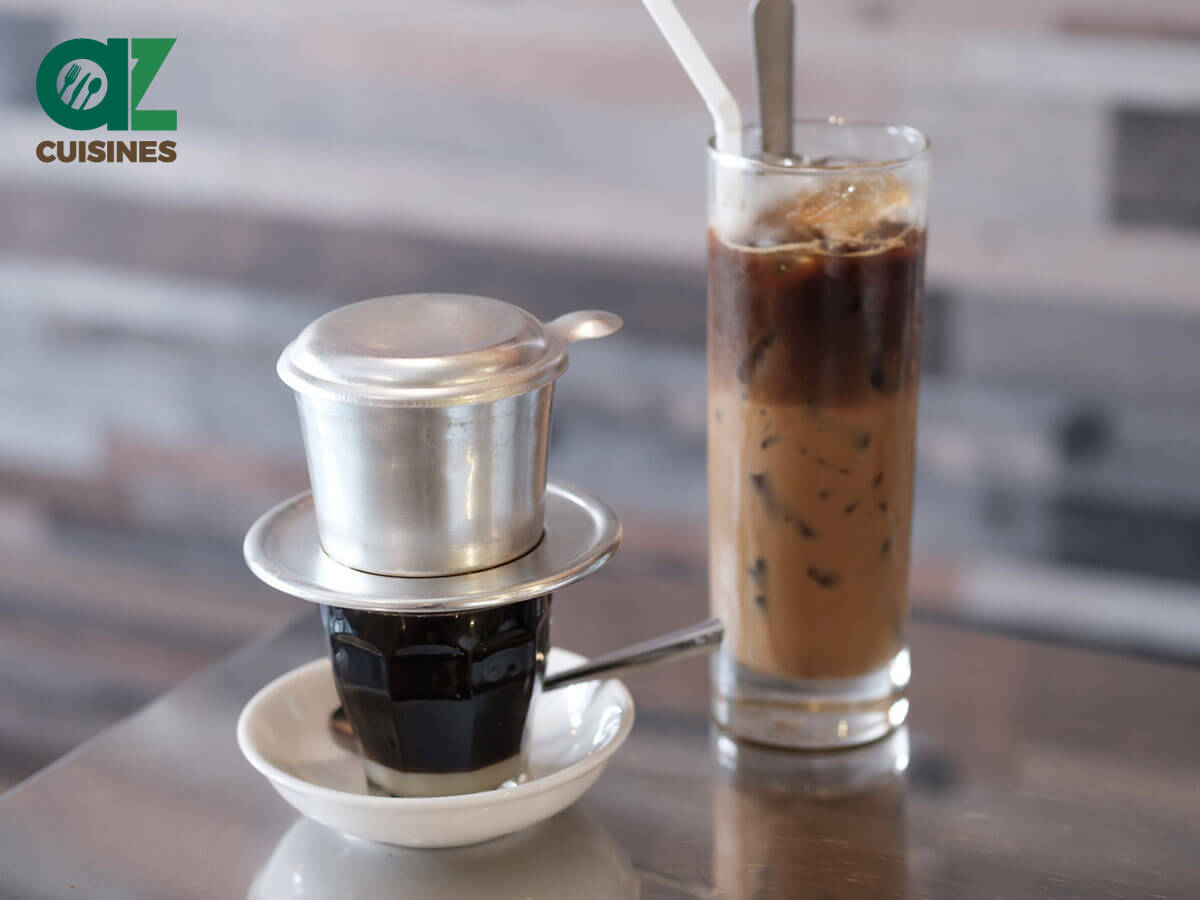
Cà Phê Sữa Đá
The famous Vietnamese sandwich, bánh mì, often goes well with Vietnamese coffee, like cà phê đá (iced coffee) or cà phê sữa đá (iced coffee with milk).
The strong, slightly sweet coffee balances the savory and sometimes complex and savory flavor of the sandwich.

Bia
Bia (aka beer) is commonly enjoyed with light savory snacks or hearty dishes in Vietnam. The crispness of the beer also complements the freshness of the seafood.
What is Vietnamese Eating Etiquette?
Vietnamese eating etiquette reflects the country’s cultural values of respect, communal harmony, and appreciation for food. Here are five key aspects of it.
Communal Eating Style
Meals are typically served family-style, with shared dishes placed in the center of the table.
Locals commonly take food from these shared dishes and place it directly onto their own rice bowls or plates.
Use of Chopsticks and Spoons
Chopsticks are the primary utensils, used alongside spoons, especially for soups.
Don’t stick chopsticks vertically into a bowl of rice (as this resembles incense sticks used in funerals), or pass food directly from chopstick to chopstick.
Order of Serving
Respect for elders is a key aspect of the country’s culture. Usually, the eldest or most respected person starts the meal or is served first.
Rice Bowl Etiquette
When eating rice, it’s customary to hold the rice bowl close to your mouth. This is a practical approach and is considered polite.
Drinking Etiquette
Vietnamese normally make a toast before starting to drink. When receiving a drink or clinking glasses, especially from the elders or superiors, it’s polite to use both hands.
Finally, let’s have a quick look at some commonly asked queries regarding Vietnamese food specialties for more information.




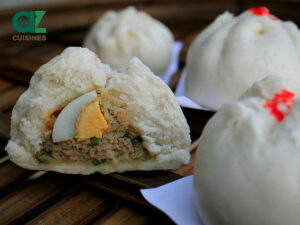
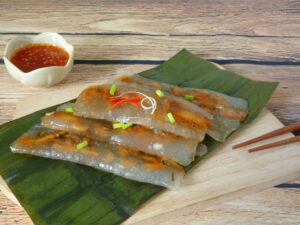

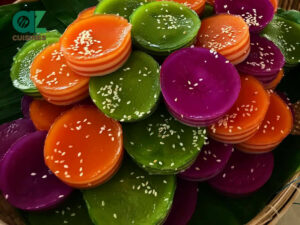
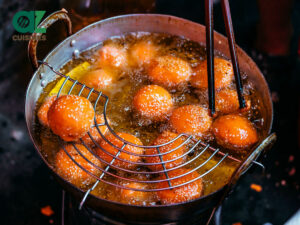

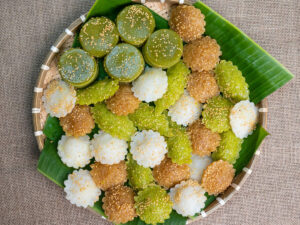
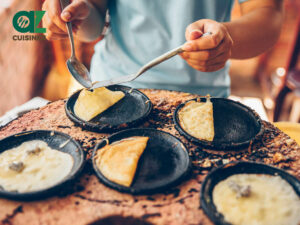
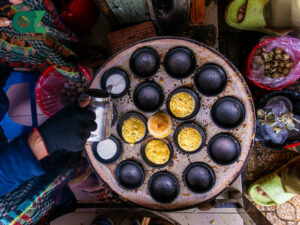

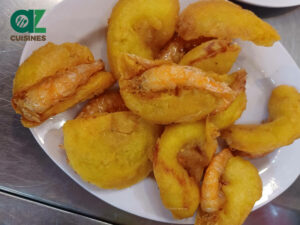
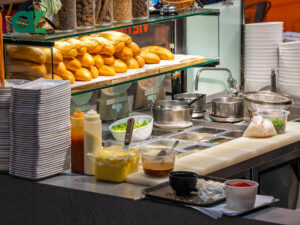

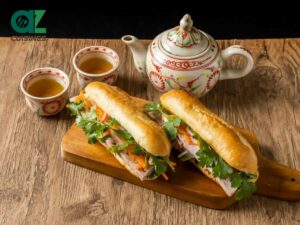
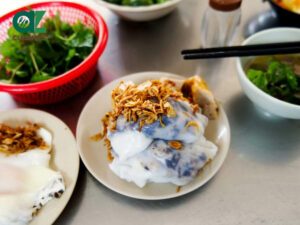
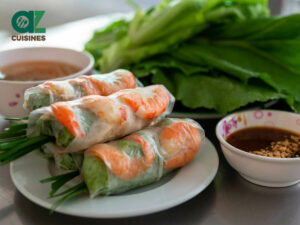
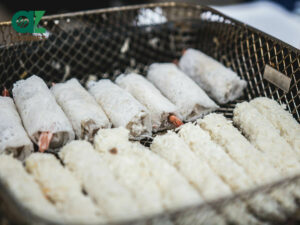
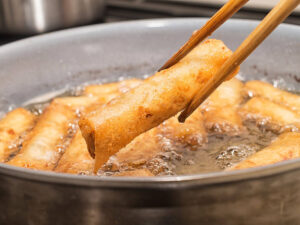
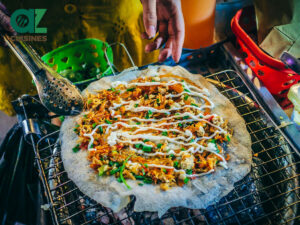

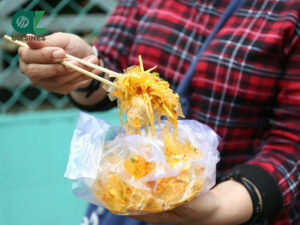

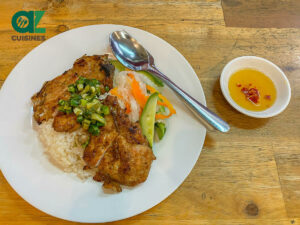
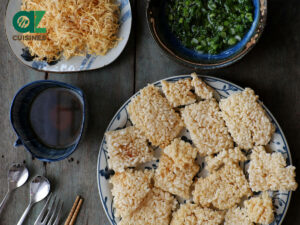
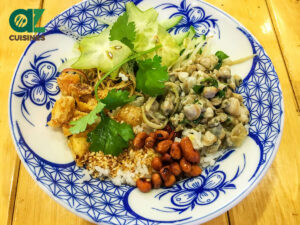

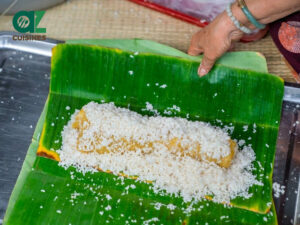
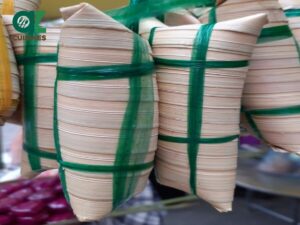
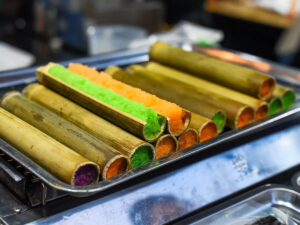
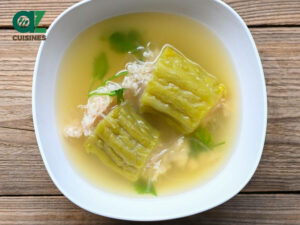
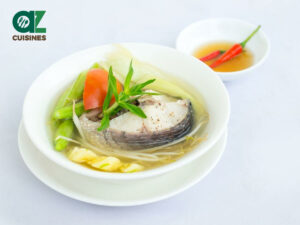

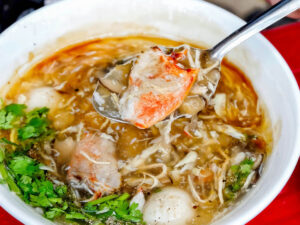
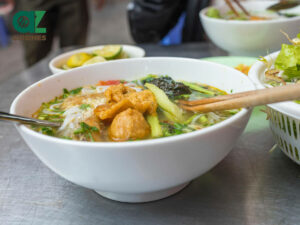
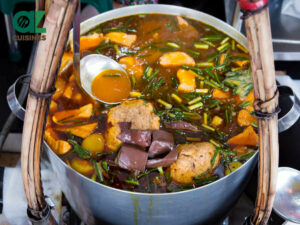

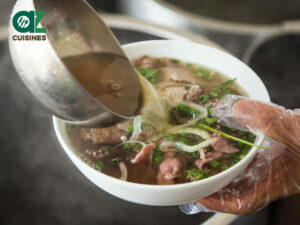
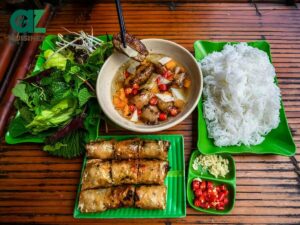


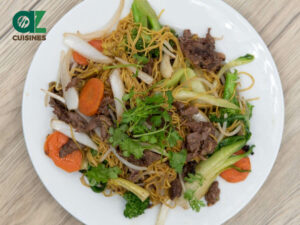
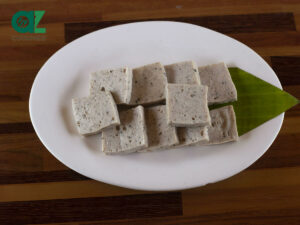

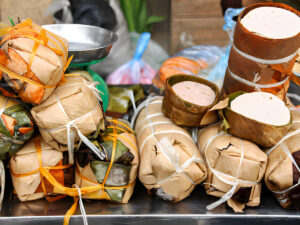
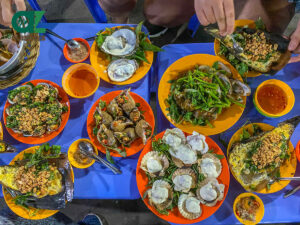
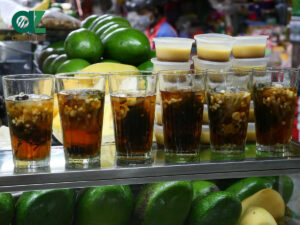
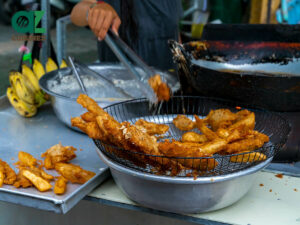
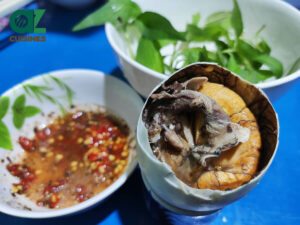
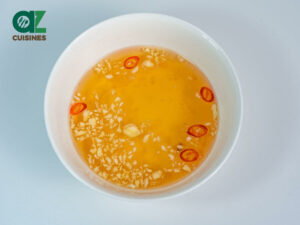
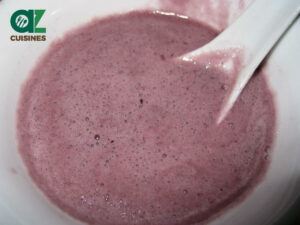
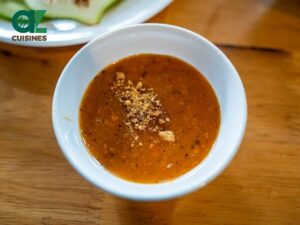

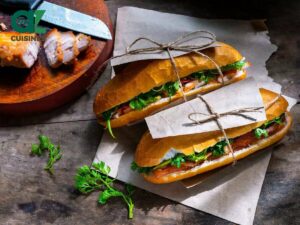
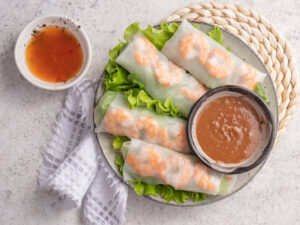

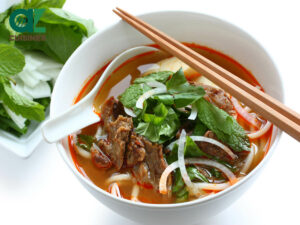
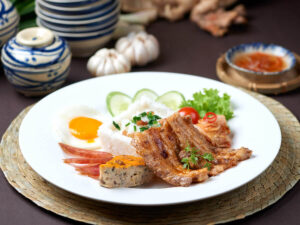
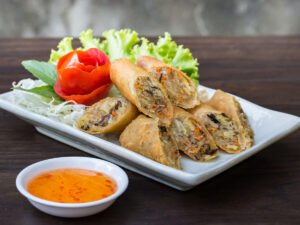

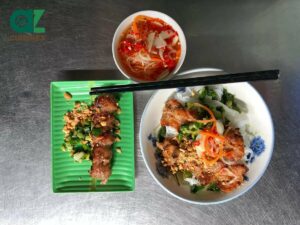
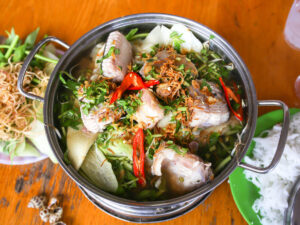
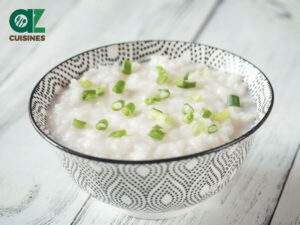
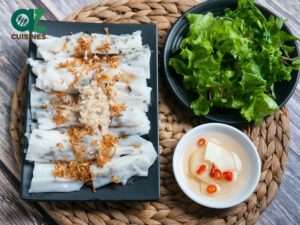
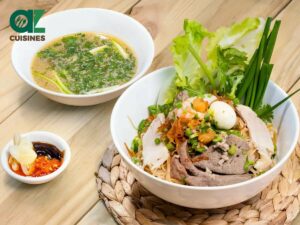
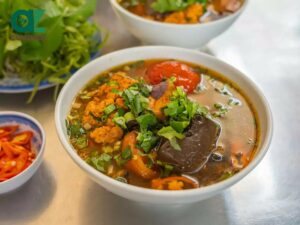
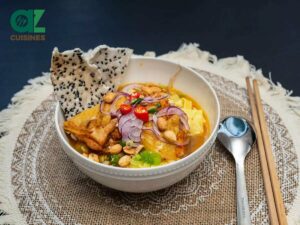
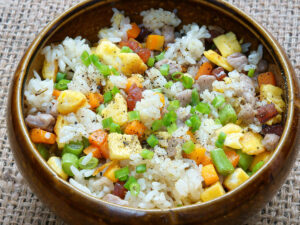
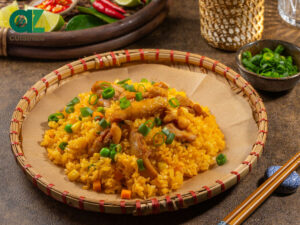

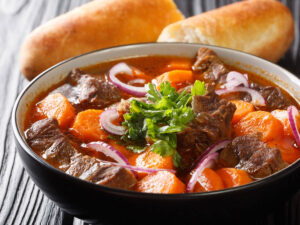

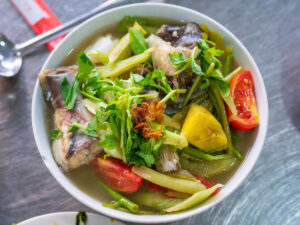
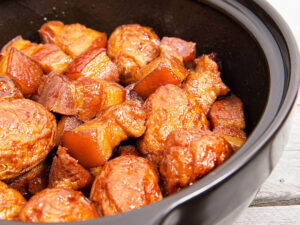
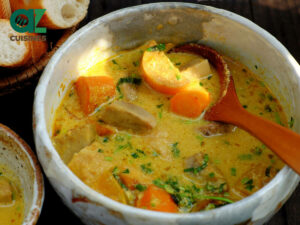

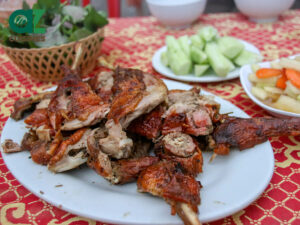
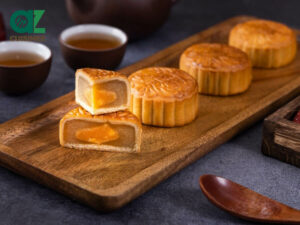



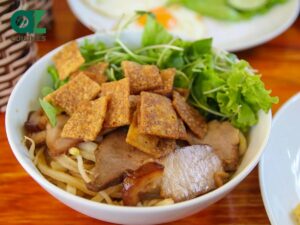
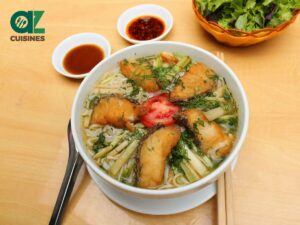
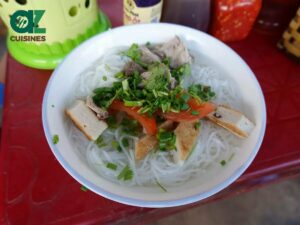
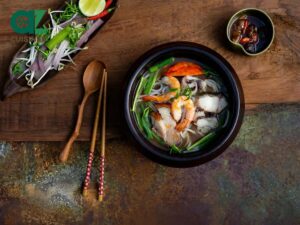

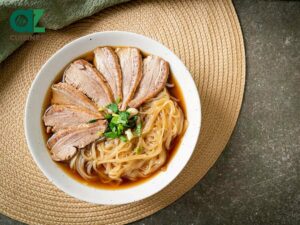

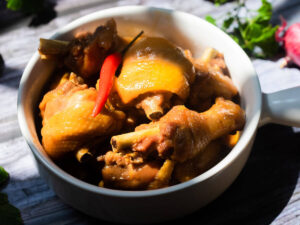

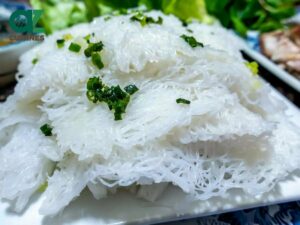


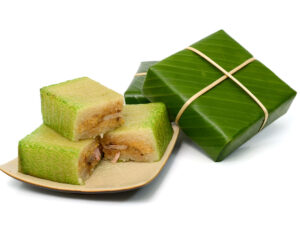
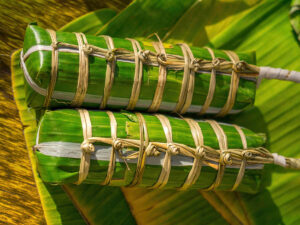
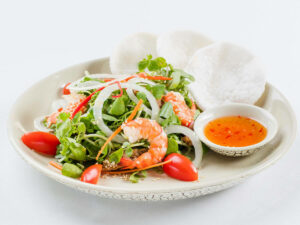
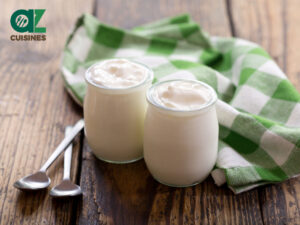
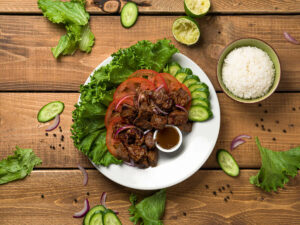
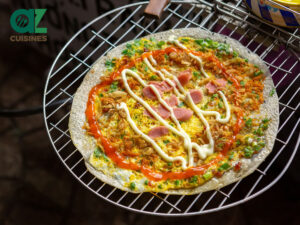
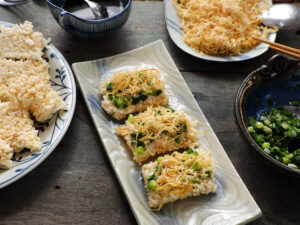

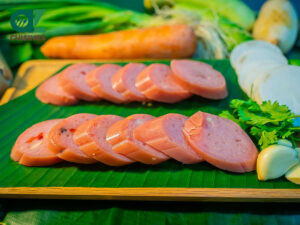

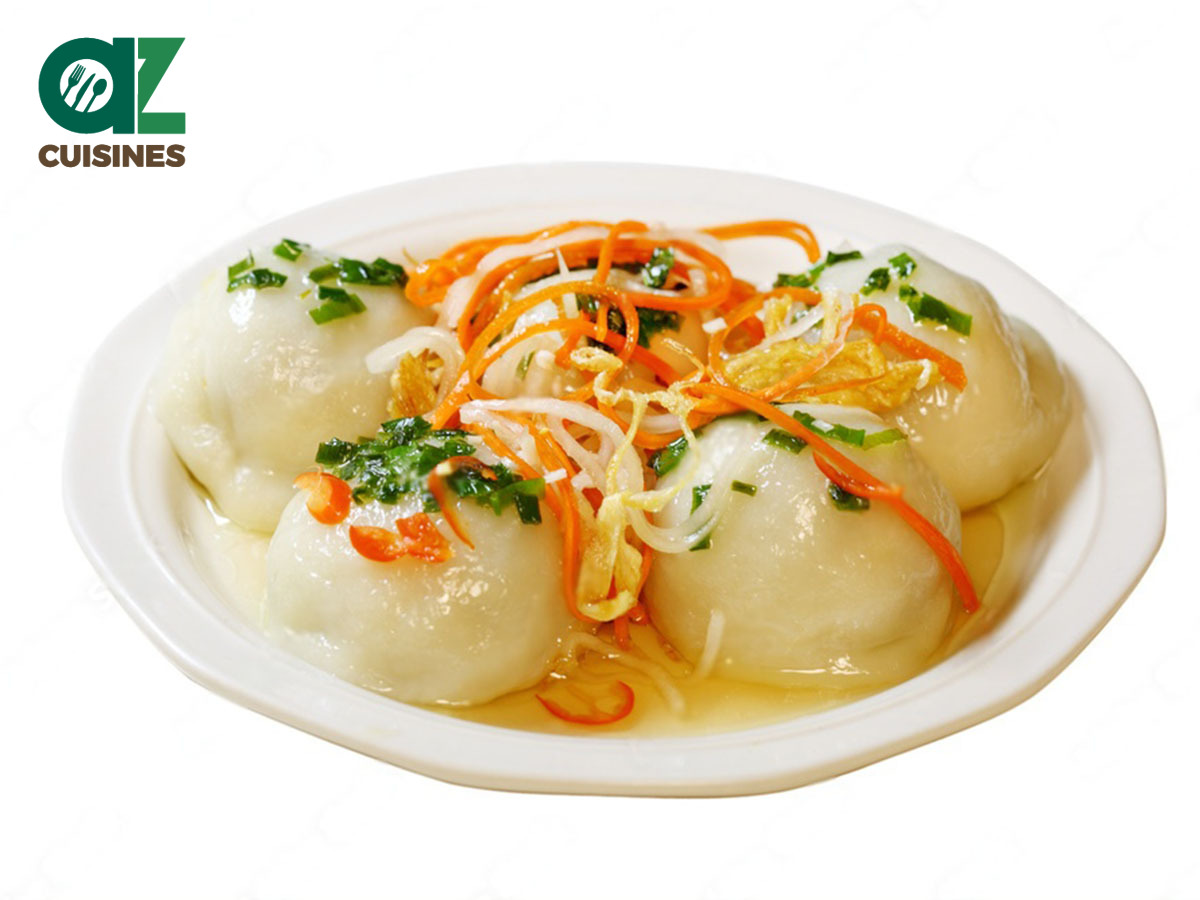
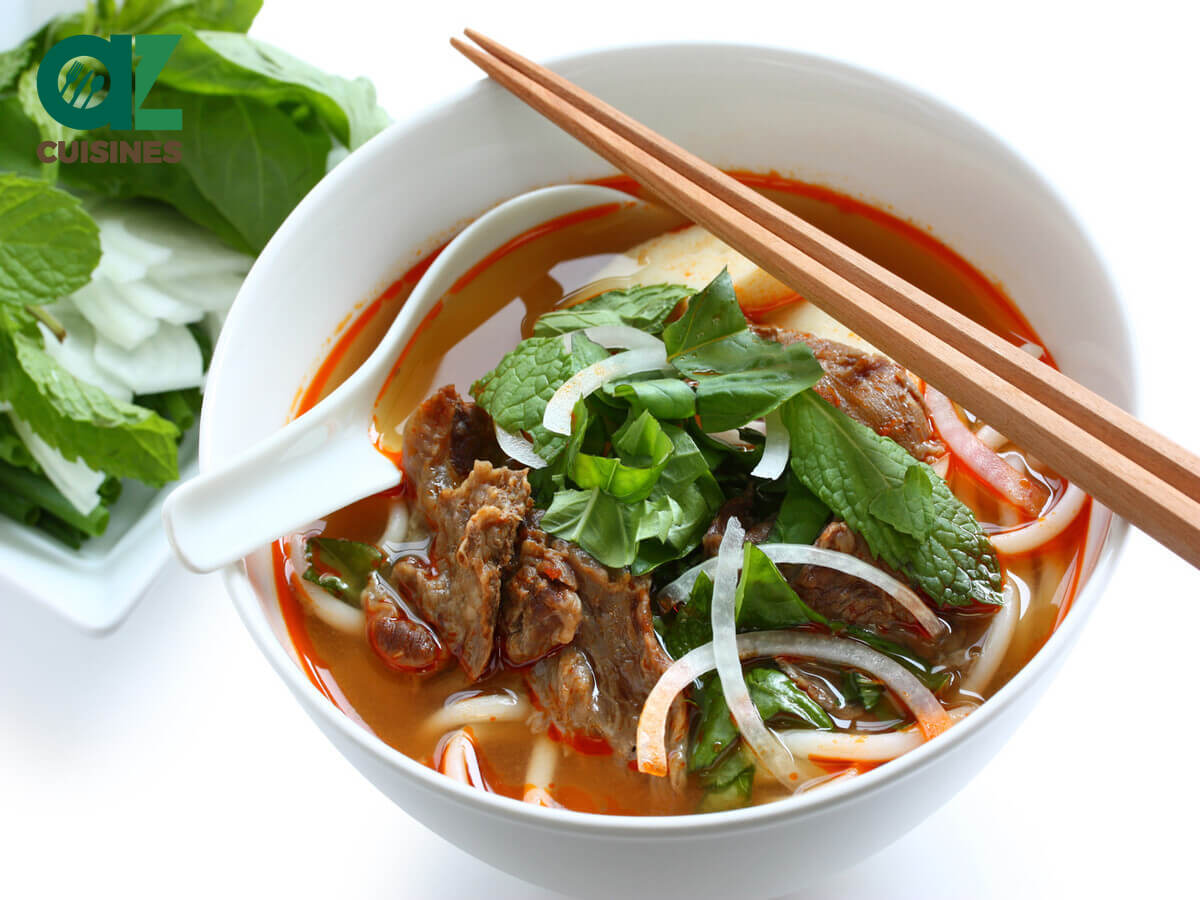
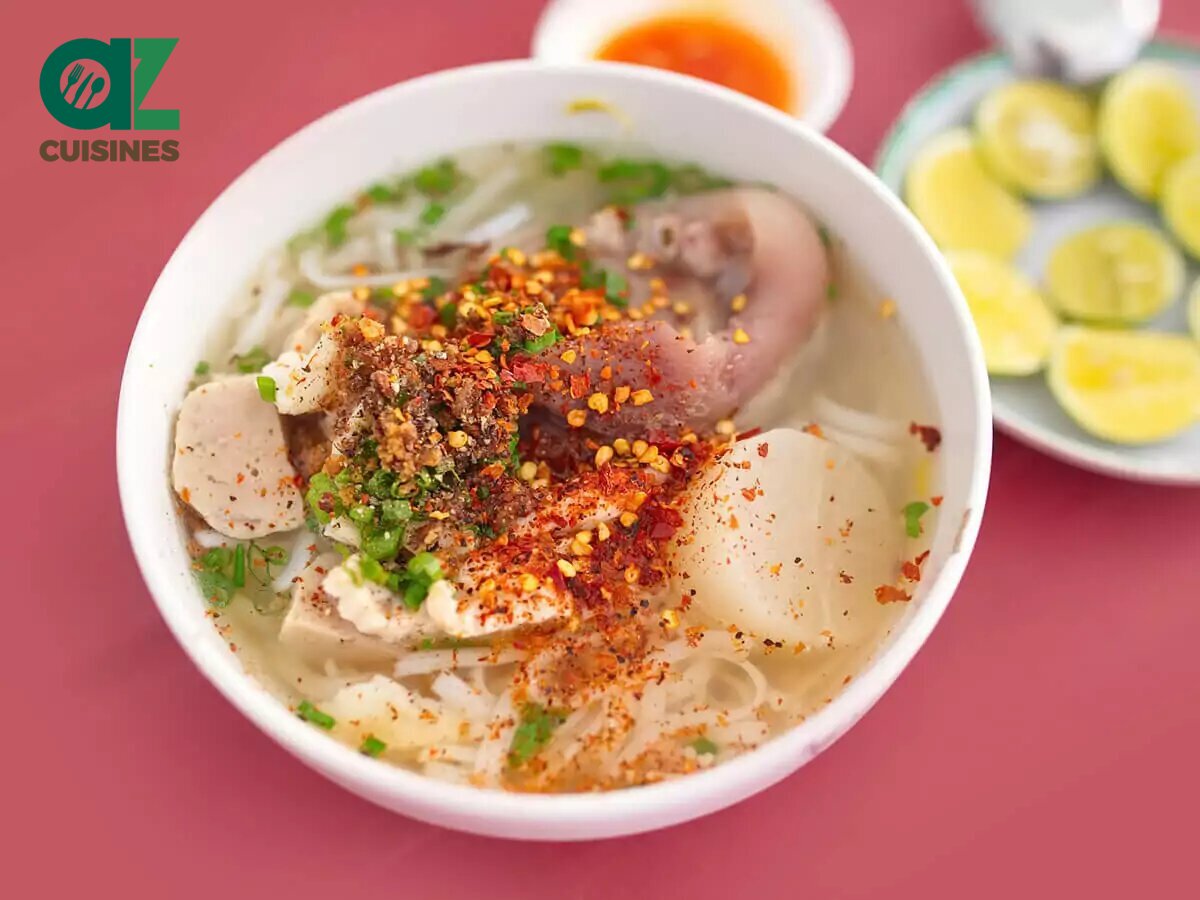
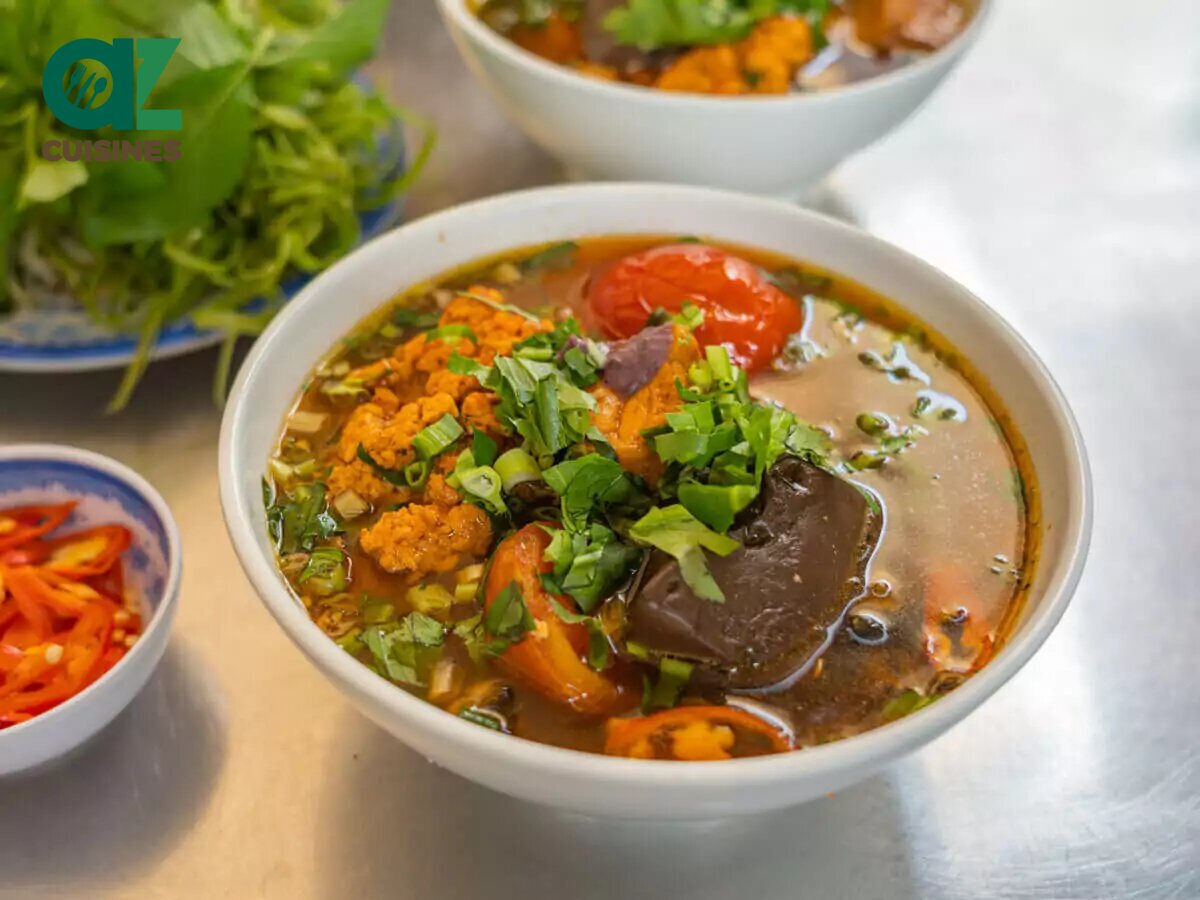
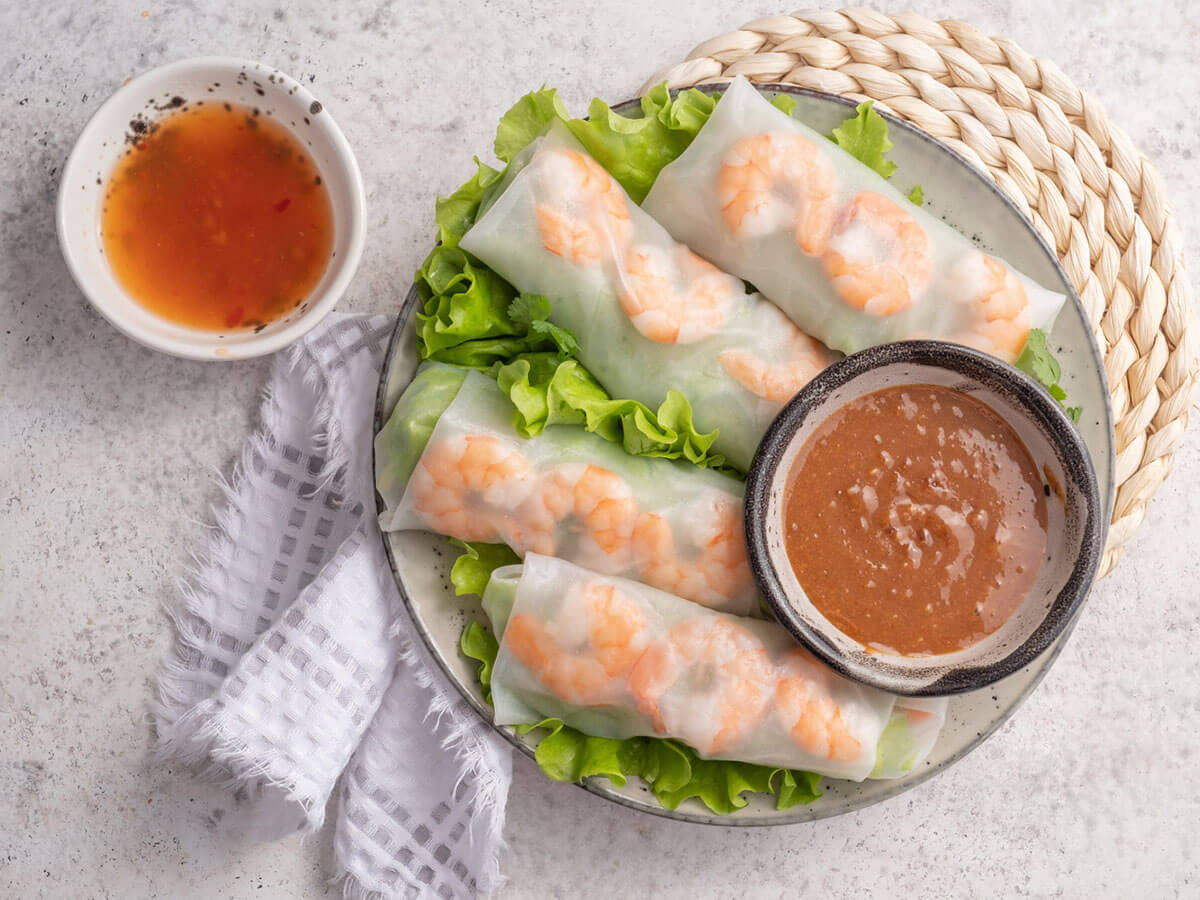
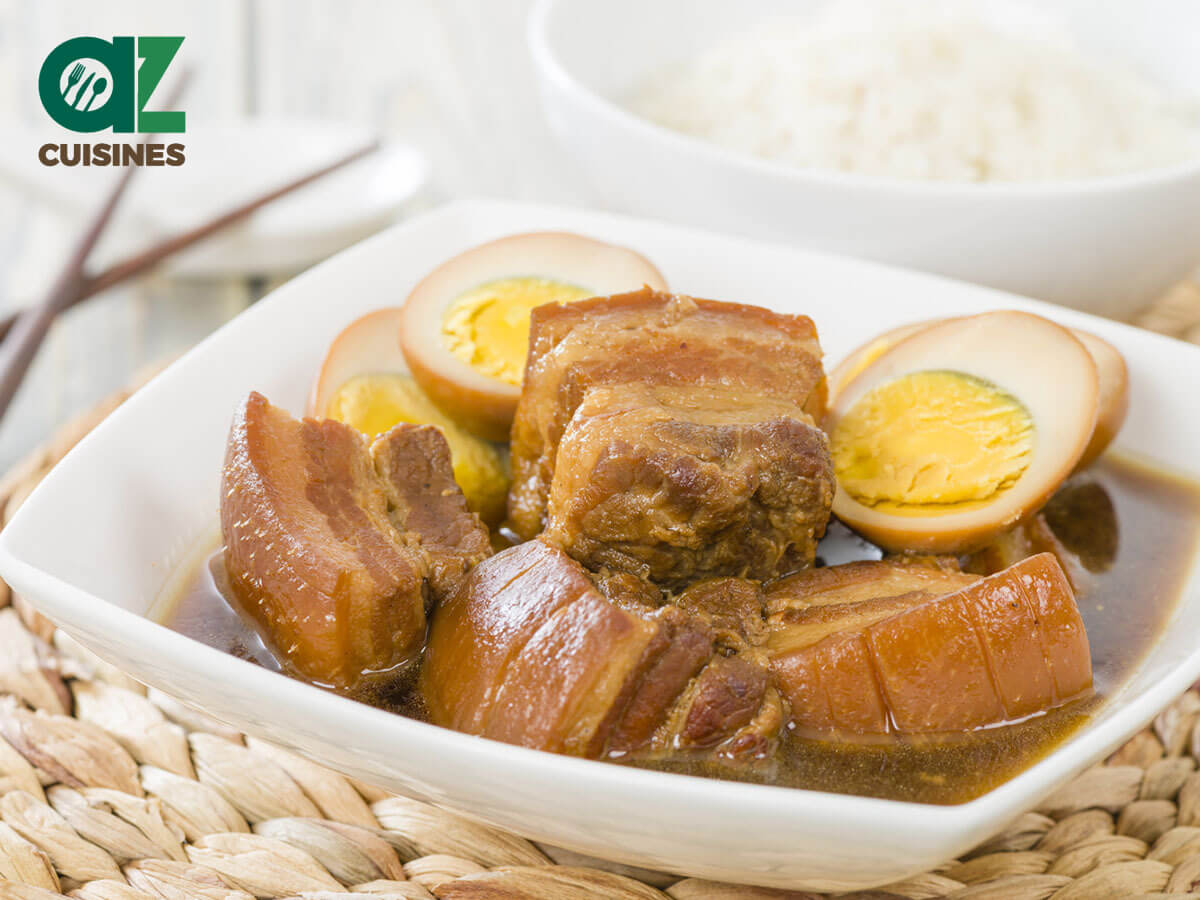
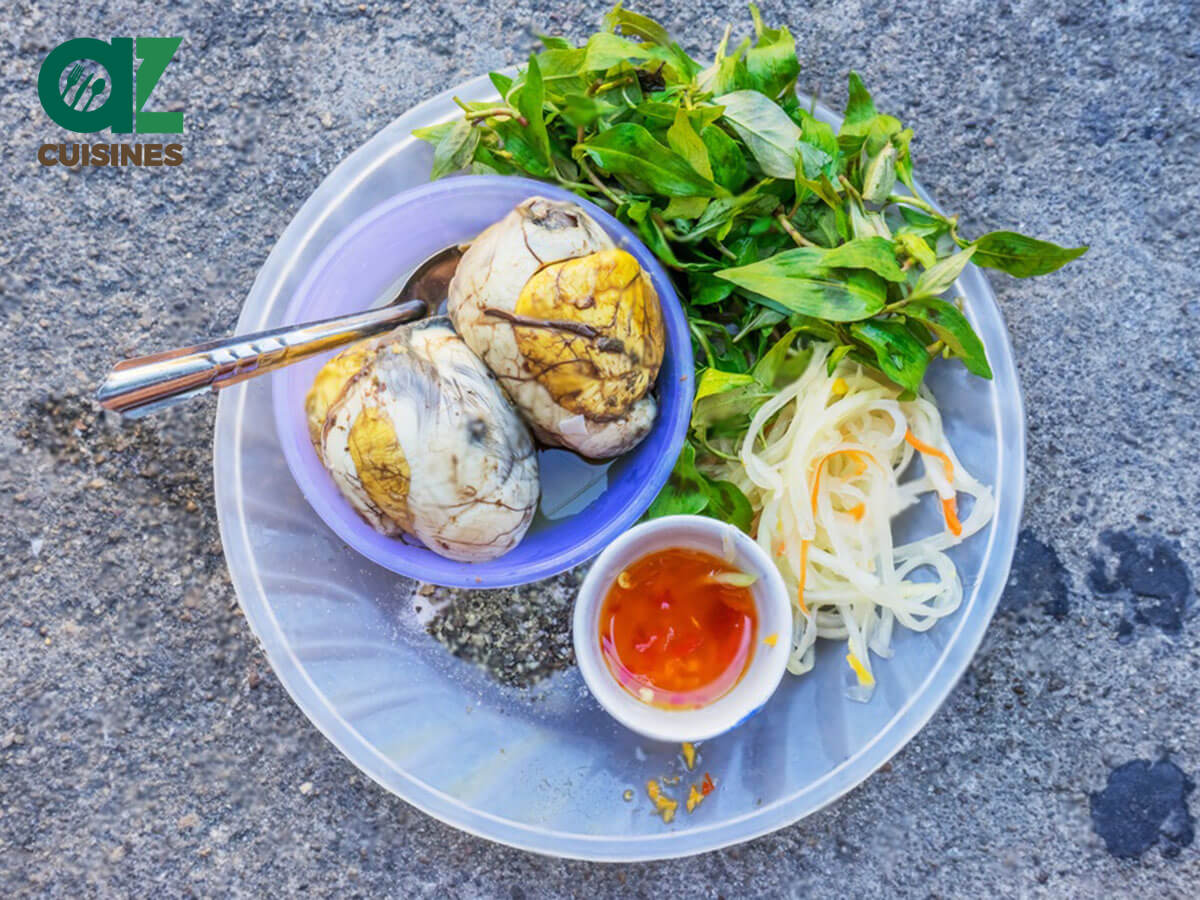
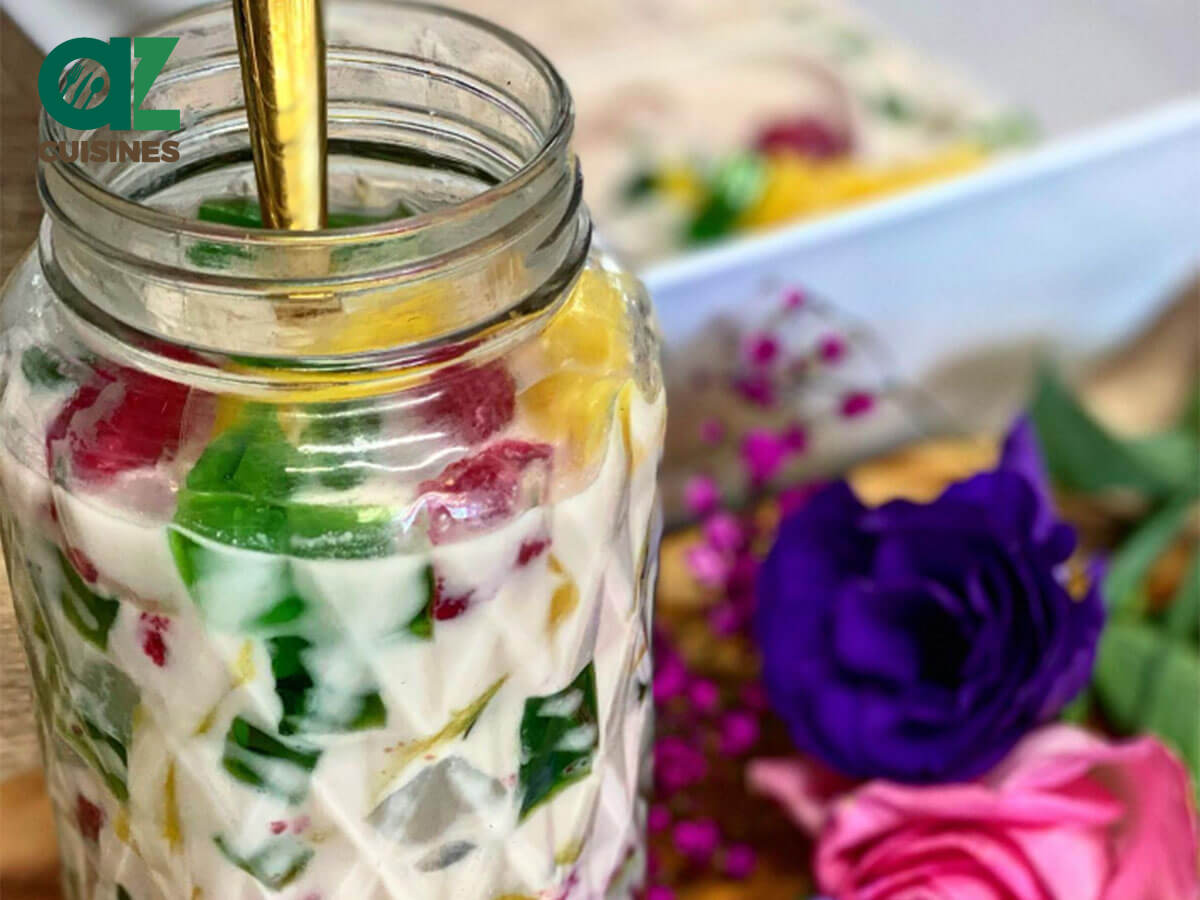

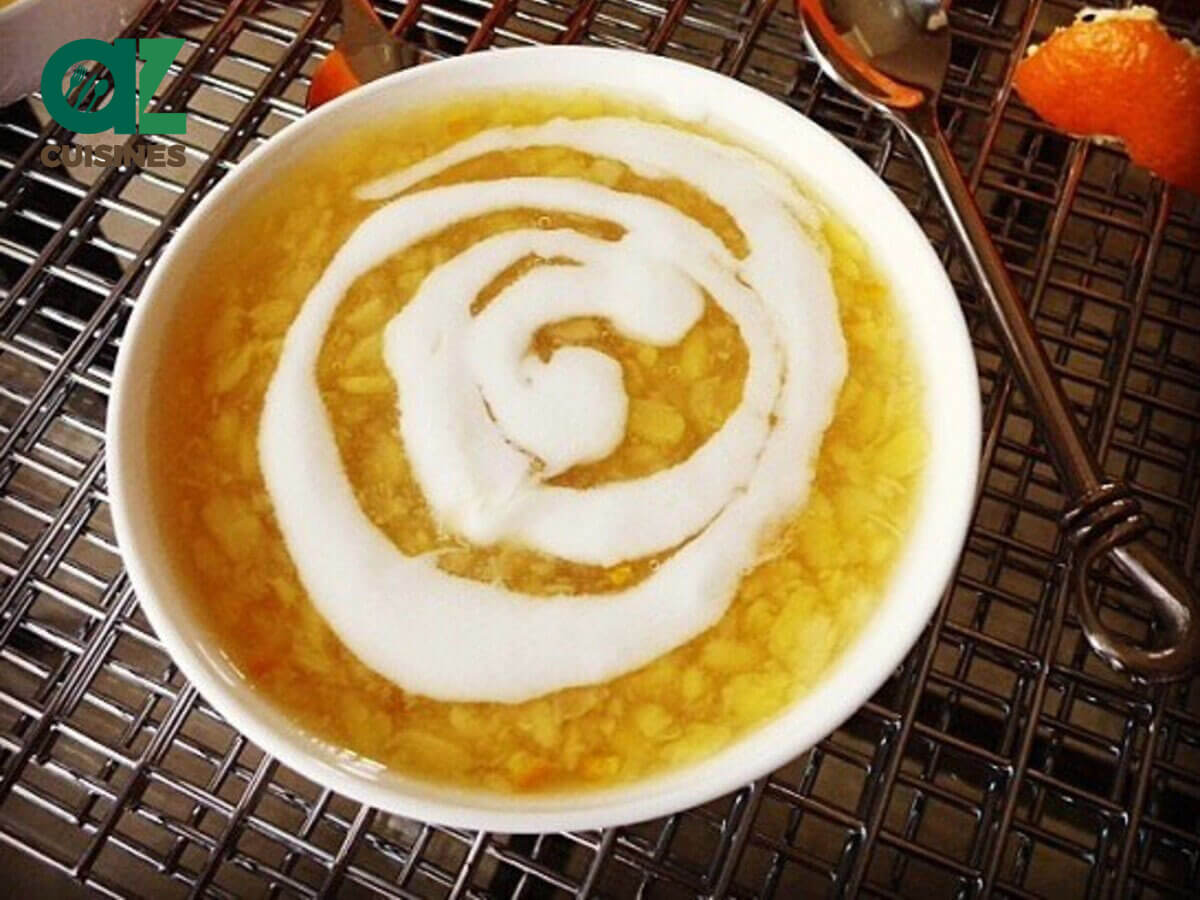


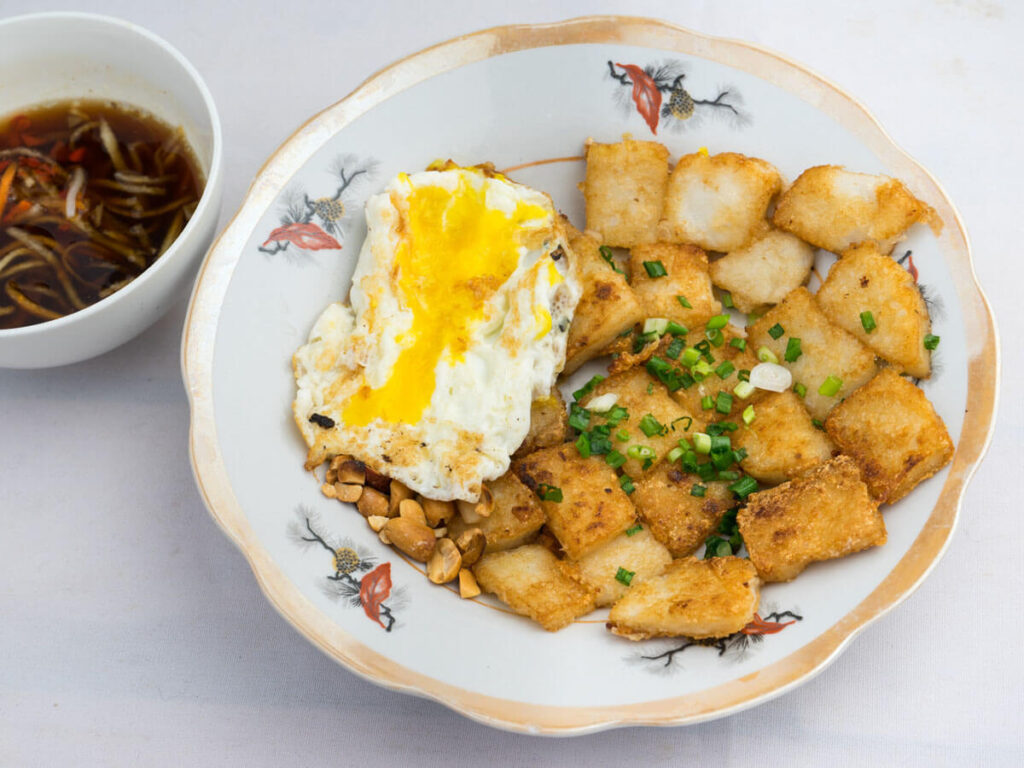
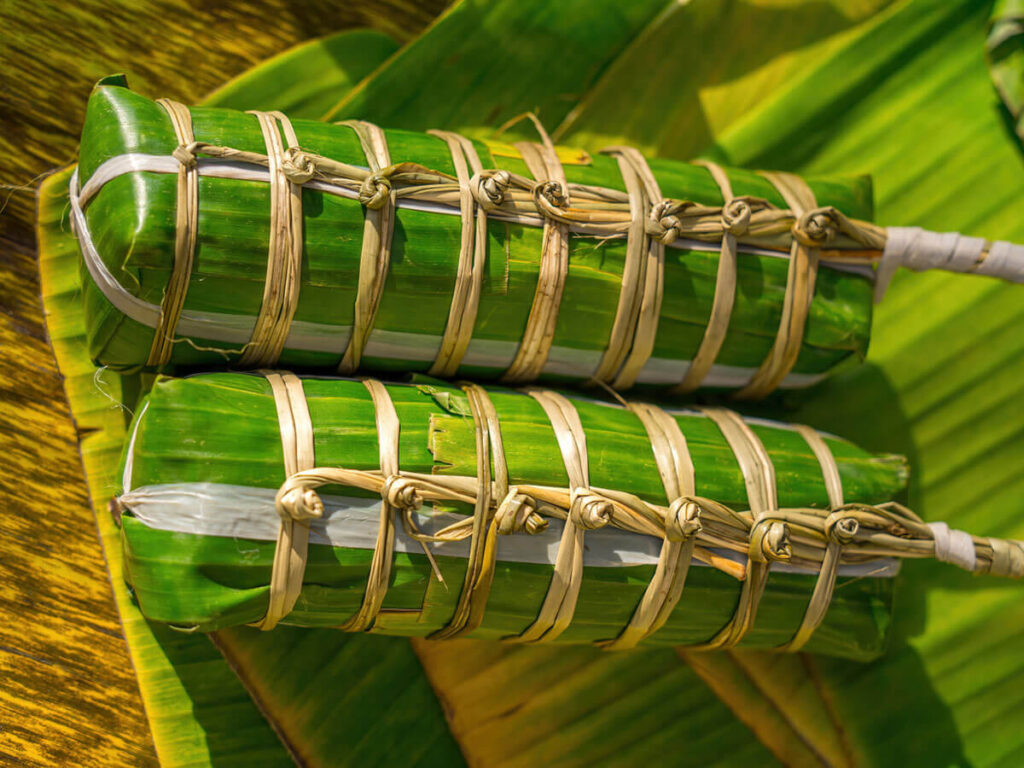
Truc Tran (Kris)
Senior Food Editor
Expertise
Home Cooking, Meal Planning, Recipe Development, Baking and Pastry, Food Editor, Cooking-video Maker, Vietnamese Food Evaluation Expert
Education
Truc Tran (Kris), an experienced food writer and editor, is great at exploring and describing global cuisines, from simple street food to fancy dining. In her writing, she skillfully mixes different flavors, cooking methods, and culinary traditions, showing the unique character of various cultures through their food and drinks. On azcuisines.com, Kris highlights her knowledge, especially in Asian cuisine and worldwide traditional dishes.